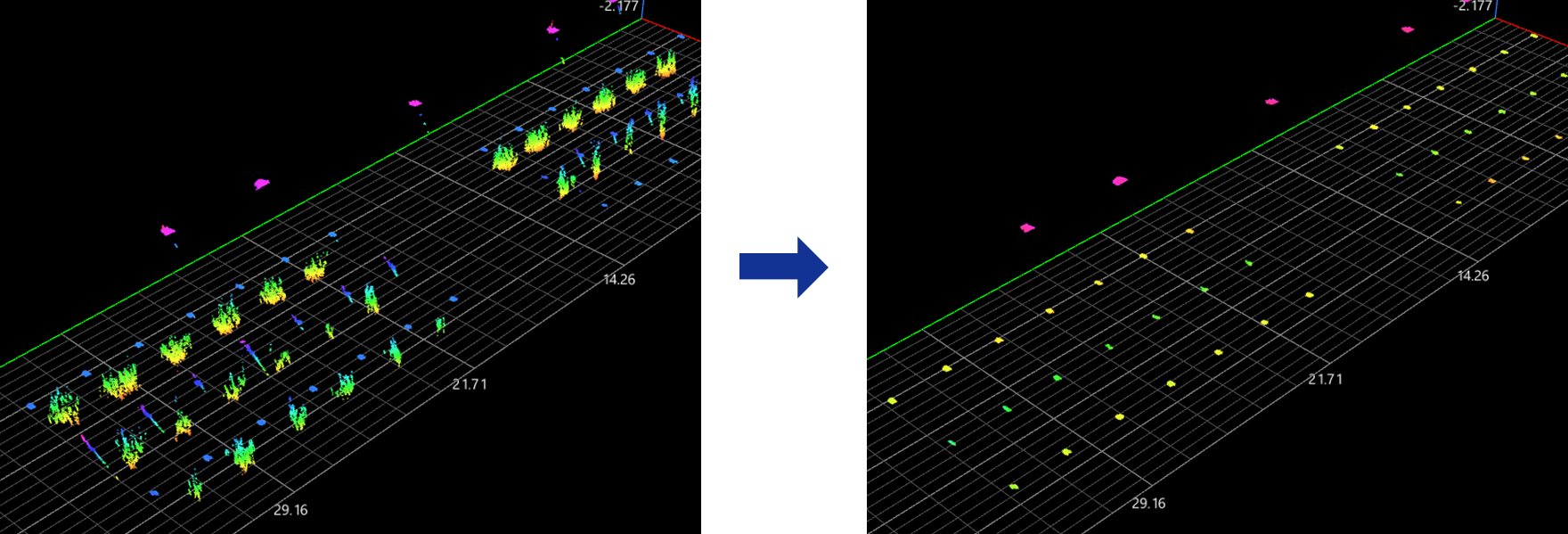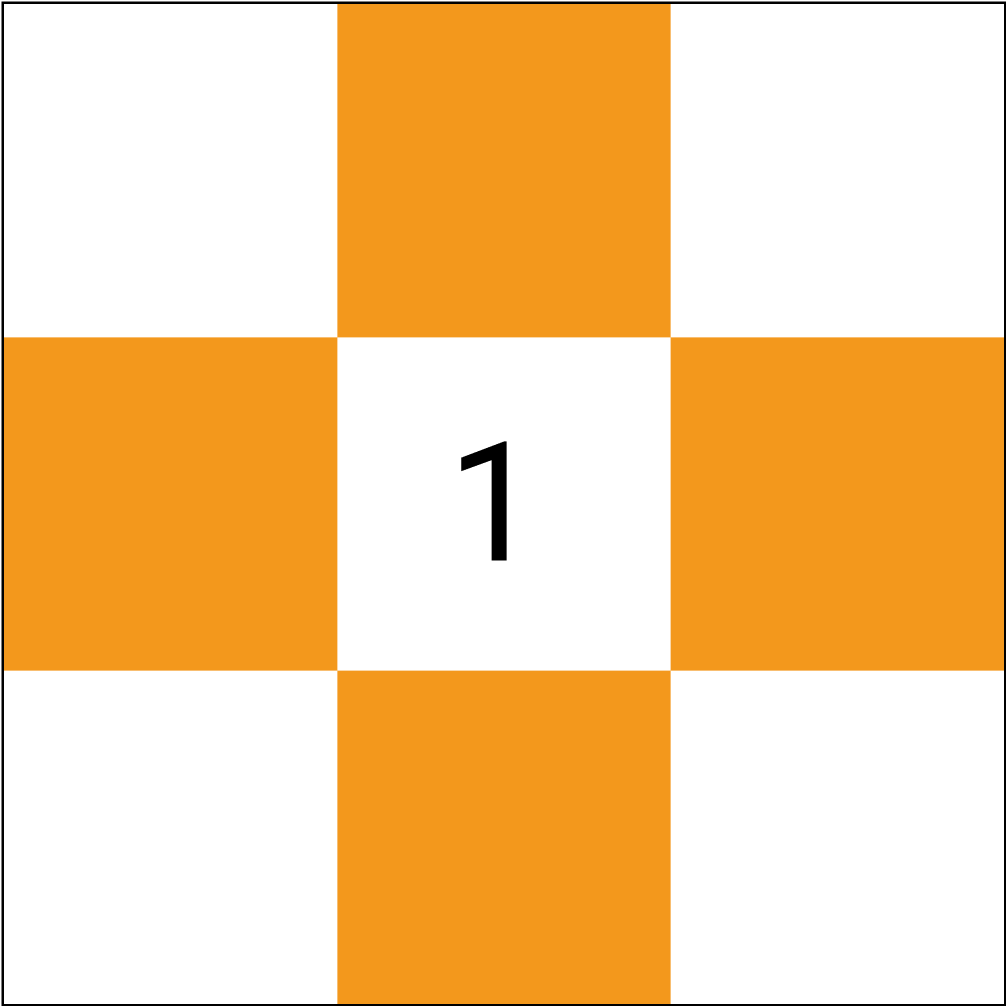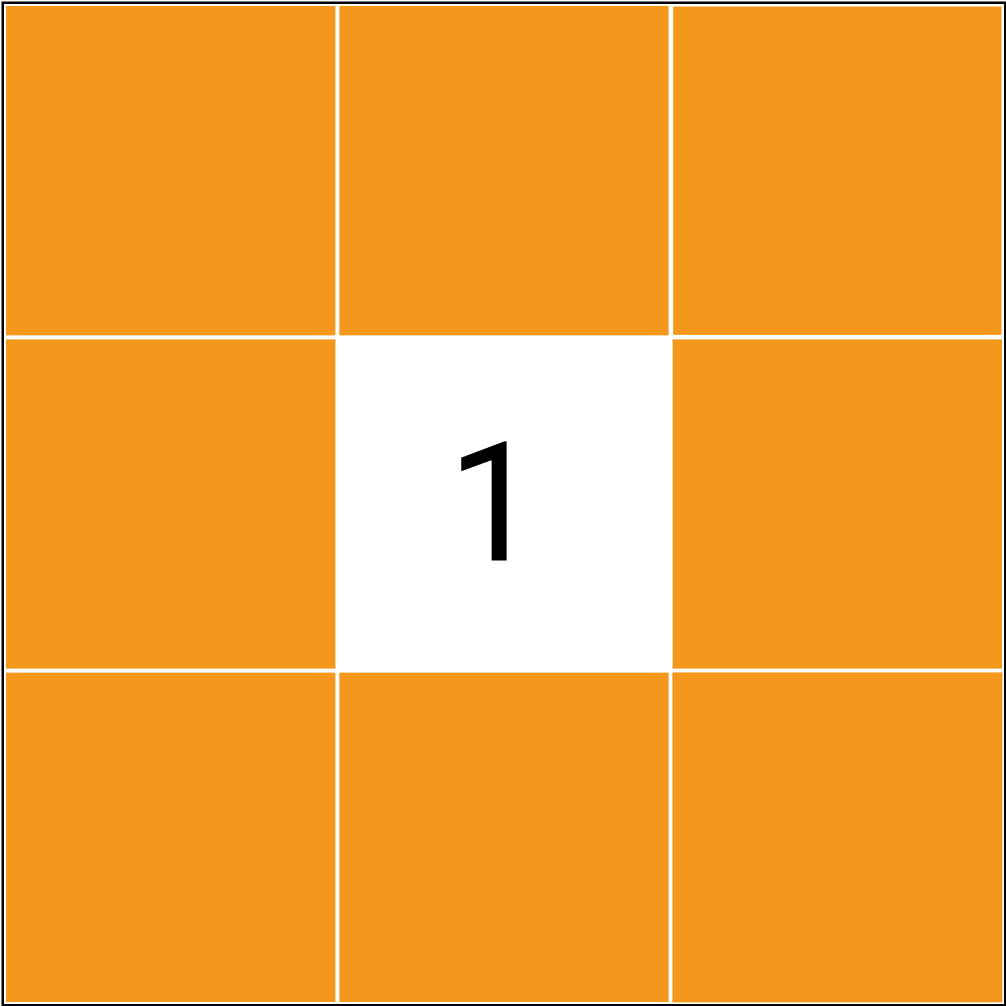Remove Noise from Surface
Description
Use this Step to remove noise from the surface data based on the similarity of neighboring data points.

Workflow
The process of configuring this Step is shown below:

-
Configure the input. Connect the Step ports in the graphical programming workspace or select the input under Input in the parameter configuration panel.
-
Determine whether to use a feature region.
-
Set other parameters.
-
Select the desired output items under Output. For an expandable output item, click ▶ and configure the Min and Max values to determine the acceptable range for the item.
Parameters
| Parameter | Description |
|---|---|
Use Feature Region |
The Step will process all of the surface data when no feature region is used. The Step will process surface data within the region when the feature region is used. At this point, the following parameters need to be set:
|
Use Intensity Image |
When unselected, the Step processes the depth map; otherwise, the Step processes the intensity image. |
Depth Difference Threshold |
Determines whether two neighboring points are similar. If the depth value difference between two neighboring points is less than or equal to the threshold, they are considered similar and grouped into the same class. |
Intensity Difference Threshold |
Only visible when Use Intensity image is selected. Determines whether two neighboring points are similar. If the intensity value difference between two neighboring points is less than or equal to the threshold, they are considered similar and grouped into the same class. |
Neighborhood |
Determines which points around a certain point are considered neighboring points.
|
Min Number of Points in a Class |
After clustering, if the number of data points in a class is lower than the set minimum, all points in that class will be considered noise and removed. |
Use Statistical Filter |
When noise points are connected to the main data and the differences in height or intensity values are small, use the statistical filter to further remove noise. Configure the following parameters: |
Standard Deviation Calculation Method |
|
Number of Neighbors |
Only visible when Based on relative values is selected in “Standard Deviation Calculation Method”. Determines how many neighbors of a point are used to calculate the differences in depth or intensity values. The mean of these differences is assigned to the point, thus updating the depth or intensity values of all data points in a class as relative values. |
Standard Deviation Multiplier |
Determines how many standard deviations a data point is allowed to deviate from the mean. Points outside the allowable deviation range will be removed as a noise. A smaller values means more points will be considered noise and removed. |
Output Description
The output of this Step is a processed surface data that can be used as input to other Steps.
Troubleshooting
|
CV-W4001
Error: The “Depth Threshold” value must be greater than 0. Please enter a valid value.
Solution: Make sure the parameter value is greater than 0.
CV-W4002
Error: The set “Neighborhood” is invalid. Please select a valid option from the drop-down list.
Solution: Select a valid neighborhood from the drop-down list.
CV-W4003
Error: The “Min Number of Points in a Class” value must exceed 0. Please enter a valid value.
Solution: Make sure the parameter value is greater than 0.
CV-W4004
Error: The set “Standard Deviation Calculation Method” is invalid. Please select a valid option from the drop-down list.
Solution: Select a valid deviation calculation method from the drop-down list.

